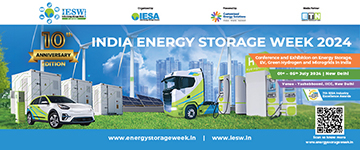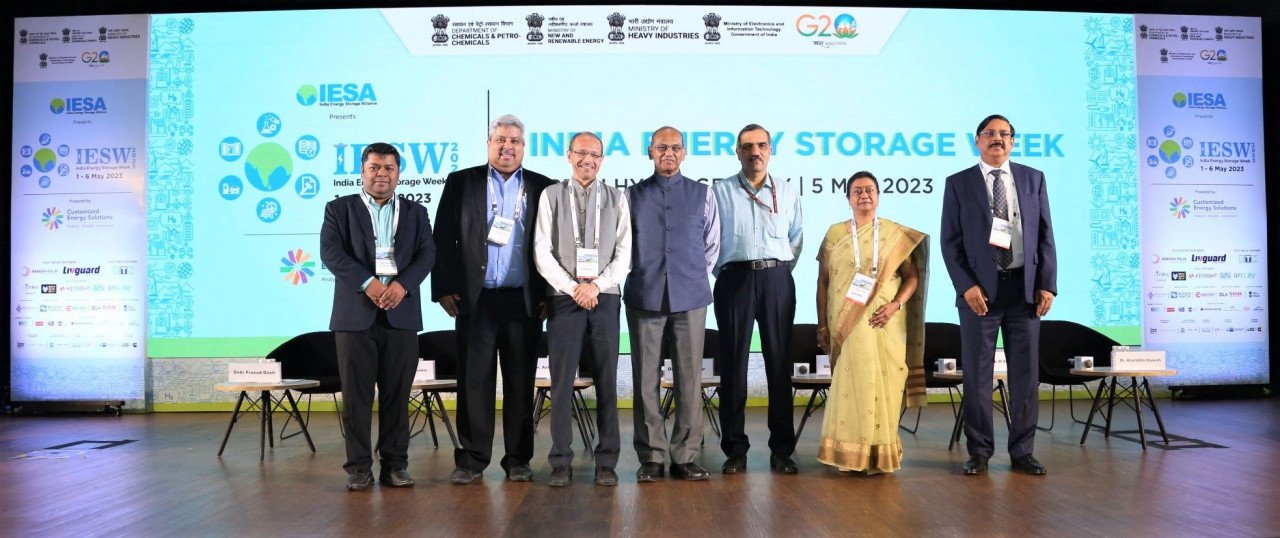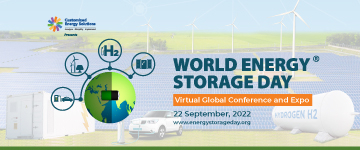IESW 2023: Green hydrogen - Fuelling the net-zero carbon future
In order to limit global warming to 1.5°C, global carbon emissions should reach net zero around mid-century. What this means is that with renewable energy and energy storage, green hydrogen will be among a portfolio of solutions required for decarbonizing the economy globally.
The Day 5 of India Energy Storage Week 2023 was dedicated to deliberations on green hydrogen.
Kickstarting Day 5, the panelists of the National Hydrogen Roadmap for India and Hydrogen Valley (Policy & R&D) deliberated on the green hydrogen roadmap, industry-academia collaborations, and skilling initiatives needed in India.
Speaking of the significance of hydrogen in decarbonizing the transportation sector, Dr. Ajay Mathur, Director General of the International Solar Alliance (ISA) stated that rising demand for hydrogen in the transportation sector will play a critical role in India's energy transition.
Hydrogen's non-toxicity and ability to adapt to existing petrol and diesel infrastructure makes it an essential component on the energy transition, he added. However, the lack of hydrogen refueling infrastructure remains a major barrier.
Abhay Bakre, Director General of the Bureau of Energy Efficiency (BEE), said the change for the amendment to the Energy Conservation Act has empowered the government to launch the carbon trading scheme, which is an important element for promoting green hydrogen in the country.
The power, transportation, and heavy industry sectors remain top contributors to carbon emissions globally.
Dr. Ashish Lele, Director, CSIR- National Chemical Laboratory (NCL) said that the National Green Hydrogen Mission approved by the Union Government focuses on a significant role of green hydrogen in emissions-heavy industries like steel and cement.
"If decarbonization is the goal, industries should be the target, " noted Dr. Lele.
"To me, the offtake of hydrogen in refineries and fertilizers [sector] then moving that into port for other applications which are easier, and thirdly, early investments in difficult to decarbonize industries, at least to do experiments, is the way forward."
Given that cost still remains a significant barrier to the market adoption of hydrogen. Mr. Lele explained that with an off-take guarantee will come scale, and with scale, the cost of hydrogen would eventually come down.
Bringing another perspective into the discussion, Derek M Shah, Sr. VP & Head- Green Energy Business, Larsen & Toubro Limited stated that demand for hydrogen must come up as well as the capital for financing green hydrogen projects.
He acknowledged the efforts being made by refineries, steel, and fertilizer sectors where they are considering replacing ammonia by green ammonia – this he believes will give a huge impetus to the industry.
Mr. Shah noted that moving forward manufacturing of electrolyzers, fuel cells and complex equipment related to green energy/ energy transition is going to be a big part of L&T's business portfolio.
Dr. Anuradda Ganesh, Chief Technical Advisor, Cummins underscored that India does not need targets but a roadmap.
Ms. Ganesh called for an integrated transition roadmap with clear milestones which will serve as a direction to the industry.
'Let's be aware of the fact that it is a transition [phase] we all have to go through, and a common integrated transition roadmap with clear milestones is the ask of the day. I believe that is going to help us achieve targets and track them otherwise we may be left talking," said Ms Ganesh.
Indian R&D scenario and industry-academic gaps
Speaking of the industry-academia gap, specifically on scalability, Dr. Lele explained that Indian universities and research institutes are good at going from Technology Readiness Levels (TRL) 1 to TRL 4-5, but most often unable to go beyond.
"Going to TRL 5 is in itself a journey but beyond TRL5, getting to TRL 9 and beyond into MRLs — is something the academic labs or R&D labs are not set up to do/ don't have the right systems in place to do that," he added
A way out of this, he believes, is for the industry to join R&D institutes early on through the TRL levels.
Giving an example of the CSIR – KPIT partnership that led to the indigenously developed hydrogen fuel cell bus, Dr. Lele stressed that well within the R&D system it is fully possible to make complex systems like these only if the industry partner joins early in the research journey. However, he admitted that there are not many companies willing to take the early risk and put in money but he hopes that this would become the norm.
Another way forward, Mr. Shah suggested was a state-supported effort for homegrown technology whereby indigenously made technology would be accepted commercially in the industrial plants coming up in the country.
Dr. Ganesh suggested sponsoring a research associate for whom the research is a job with deliverables and for the industry to support academia in giving real-time data for future analysis.
She emphasized on the need for the industry to take baby steps such as getting a lot of analysis, and lifecycle assessments type of work done. This would help the industry make decisions, and give recommendations to the government for policymaking on evidence-based data.
Further, she commended the government for the latest Hydrogen Valley project. It is a brilliant place to try out and to showcase academic research which is being done and is just at the stage in which it can be commercialized or taken to the next level, she added.
























